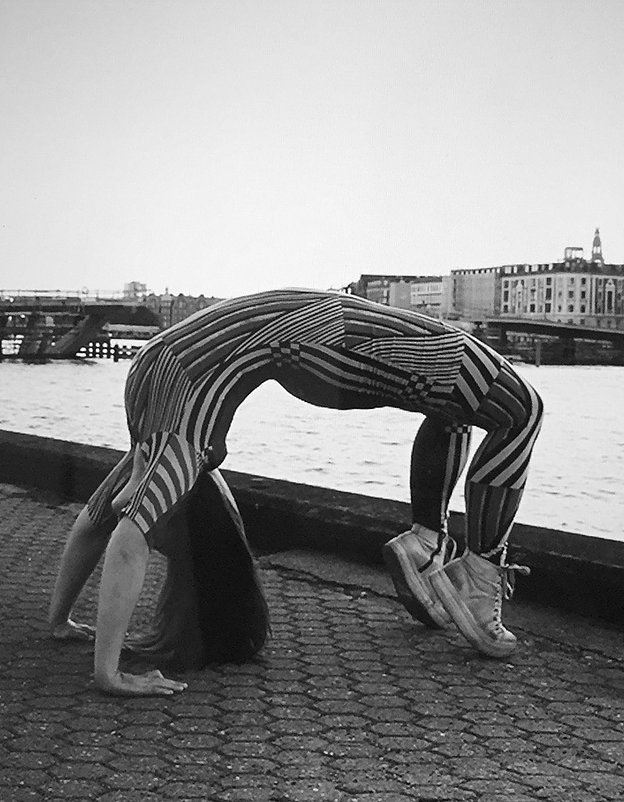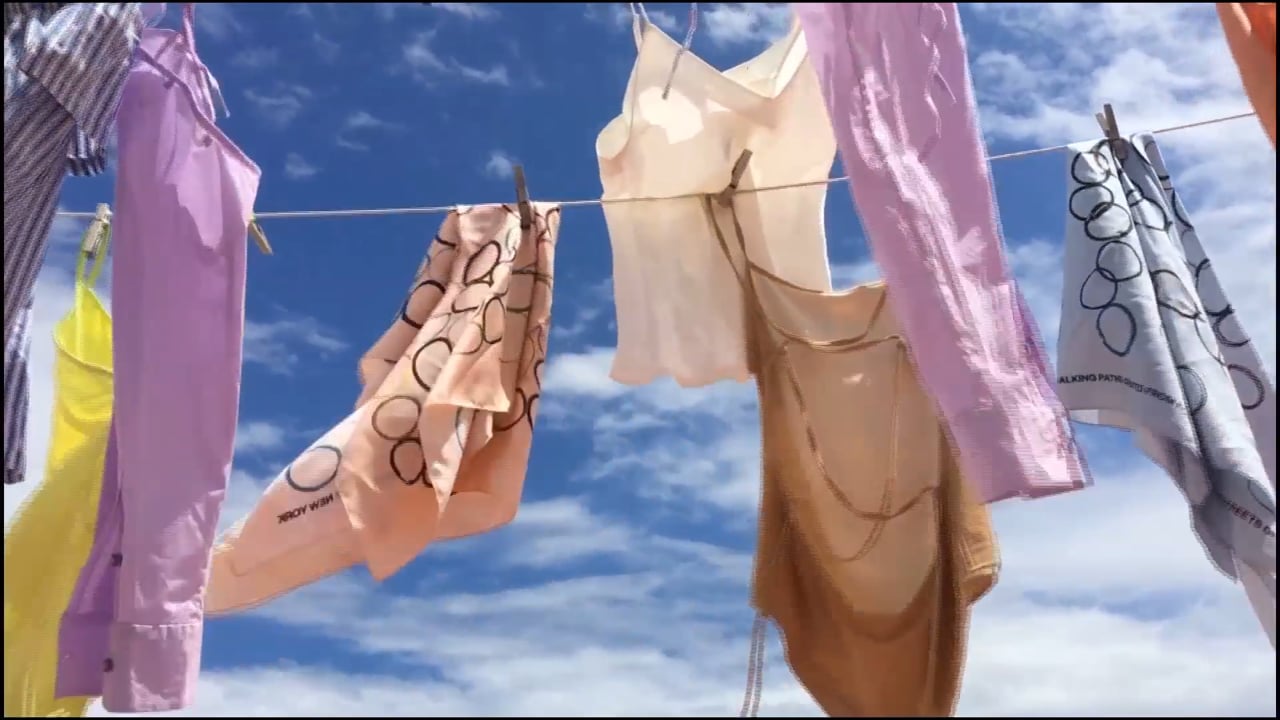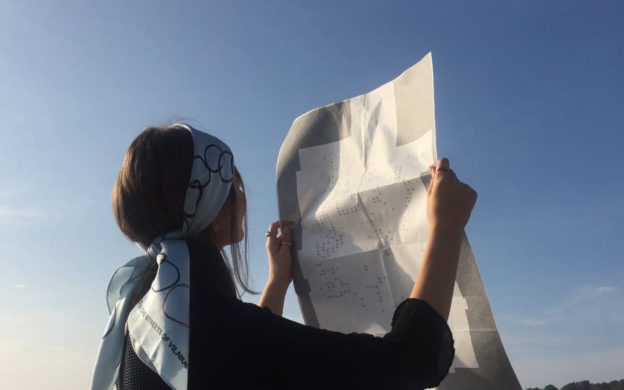Originally from Lithuania, artist Goda Gontyte relocated to Copenhagen to pursue a career in Denmark. Educated as a graphic designer, Goda graduated from Gerrit Rietveld Academy in Amsterdam where her final work resulted in her impressive project, Elasticities. We’ve all noticed lost elastic bands on the street, but Goda Gontyte saw them as potential art.
We met at Goda’s place, with her “Feminist Manifest” flag hanging happily on the wall, she launches into her background. “I studied graphic design back in the Netherlands but I don’t see myself as a graphic designer anymore,” Goda says.
“I am working on so many other things, I just call myself an artist now. Elasticities began in 2014. I came to Copenhagen and started noticing elastic bands everywhere. I thought to myself: I’m seeing these things all over the place; maybe they’re trying to tell me something!”
Gpda continues, “I started recording and collecting the elastics until I came up with the idea to create a wearable map – a scarf, really. I put images of found elastics on a piece of silk. From there, I continued building these ‘maps’ for other cities as well. Elastic, as an material, is very interesting to me because it’s meant to hold things together. I try to make invisible objects visible. I ask myself, what if these things were not there? Thinking from a graphics point of view, elastics are circles, and everything is round if you think about it,” she smiles.

Did Goda notice the same patterns of elastics in other cities too? “It’s funny because most of the elastics I have are from Copenhagen, but Amsterdam is similar in terms of how people move in the city. So I made a map for Amsterdam. I also felt that I had to do one for my native Vilnius, but there were much fewer elastics! Then I did one in New York City, which is really big. I tried to do one in Tokyo while visiting a friend, but Tokyo was so clean that I could not find any elastics there. When working on the projects in different cities, I try to think of what all these objects are saying about those cities,” she says.
We broach the topics of feminism and sustainability, a big part of Goda’s work. Why are these topics so important? Goda considers, “I guess feminism grew on me. When I began the Elasticities project, I did not think much about feminism. It really came out when I started thinking deeply about the project.

I was getting more and more interested in feminism when I found out about this feminist residency in Ercourt, Northern France, which is the only feminist residency in Europe. So I went there and found myself in a group of artists. By discussing and comparing my work with other women’s work, and listening to their stories, I found that they sounded very familiar. I realized that experience can be personal and at the same time systematic in our society, Goda explains.
How did listening to other women’s stories play into her work, I ask? Goda says, “Those conversations greatly inspired me. It was at this residence where I wrote the “Feminist Manifesto.” My thoughts on feminism came out in rhymes after three weeks of reading, discussing, and working in the garden. It starts with the word ‘analyzed’ and ends with ’feminized.’ Everything in between is a journey.”

As for sustainability, Goda notes the importance of using our own hands to create, rather than always relying on mass production. “I know it goes against what we are used to; we want everything so fast and easy. But being a bit more conscious and curious is definitely something we have to learn.
It’s important to know how things are made, who makes them, how much water is wasted, and so on. Maybe by knowing all this, we will become more sustainable and more willing to pay for the knowledge, materials, and other people’s time.” explains Goda.
We move on to the inclusivity of the current Danish art scene; is it hard to get into? Goda thinks before responding, “It’s like any other scene, I guess, and not that easy to get into. I am following it, I am fond of it, I like what other artists do and how they do it but it’s more like a closed circle and you are not going to be just invited in.” Goda continues, “Danish artists work very autonomously and can genuinely appreciate each other’s work. The art world is competitive in itself but keeping individualism and making collaborative work is also very important” she notes.

At the end of our interview, I ask Goda to talk about her latest project. “The most recent thing I’ve made is statement shoelaces. These are shoelaces printed with the titles of my past work. I think that it’s very important for an artist to stand on their own feet; to just go out and do things. Most of the good ideas come in movement,” she explains.
With wearable works like hers, it seems that the good ideas come not only in movement, but as part of it.
See more on Elasticities and Goda Gontytes’s work.

